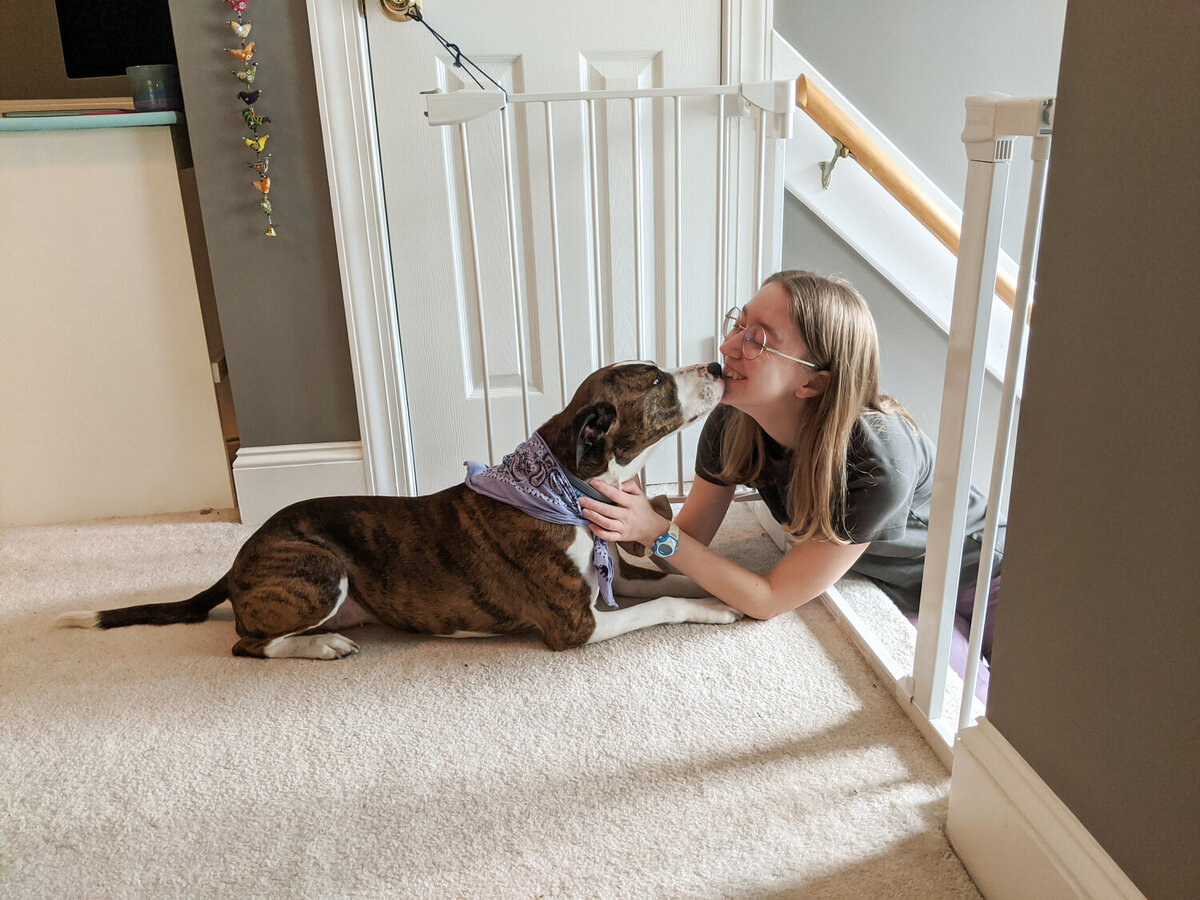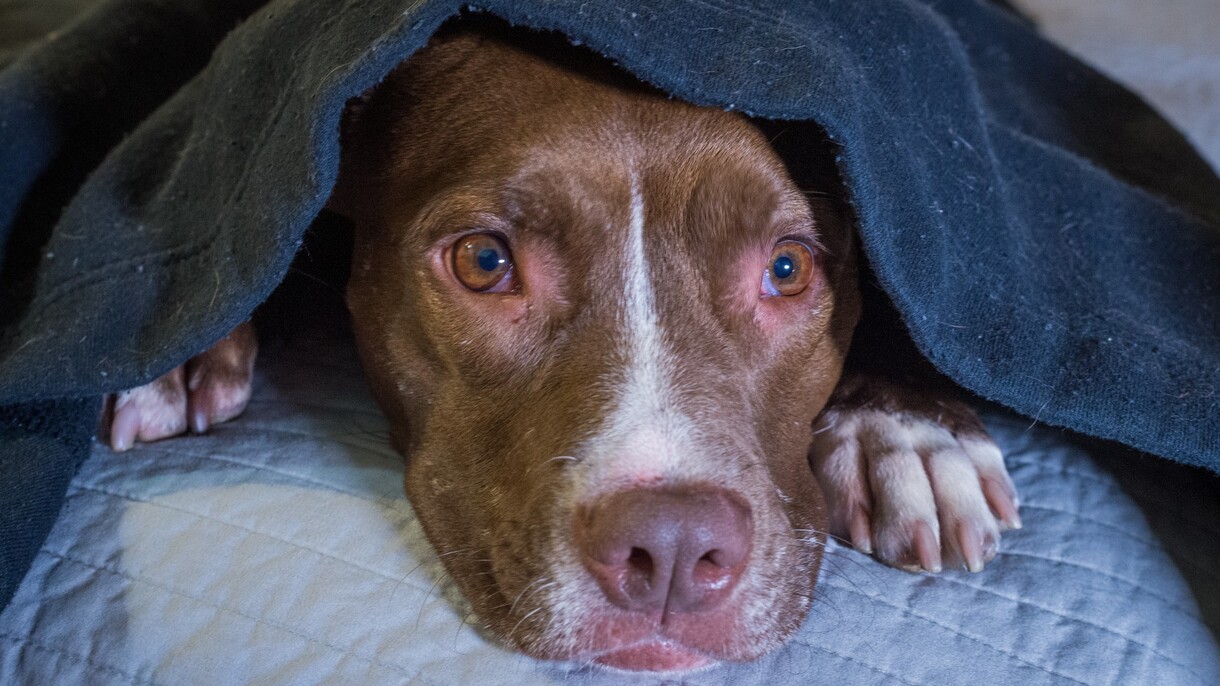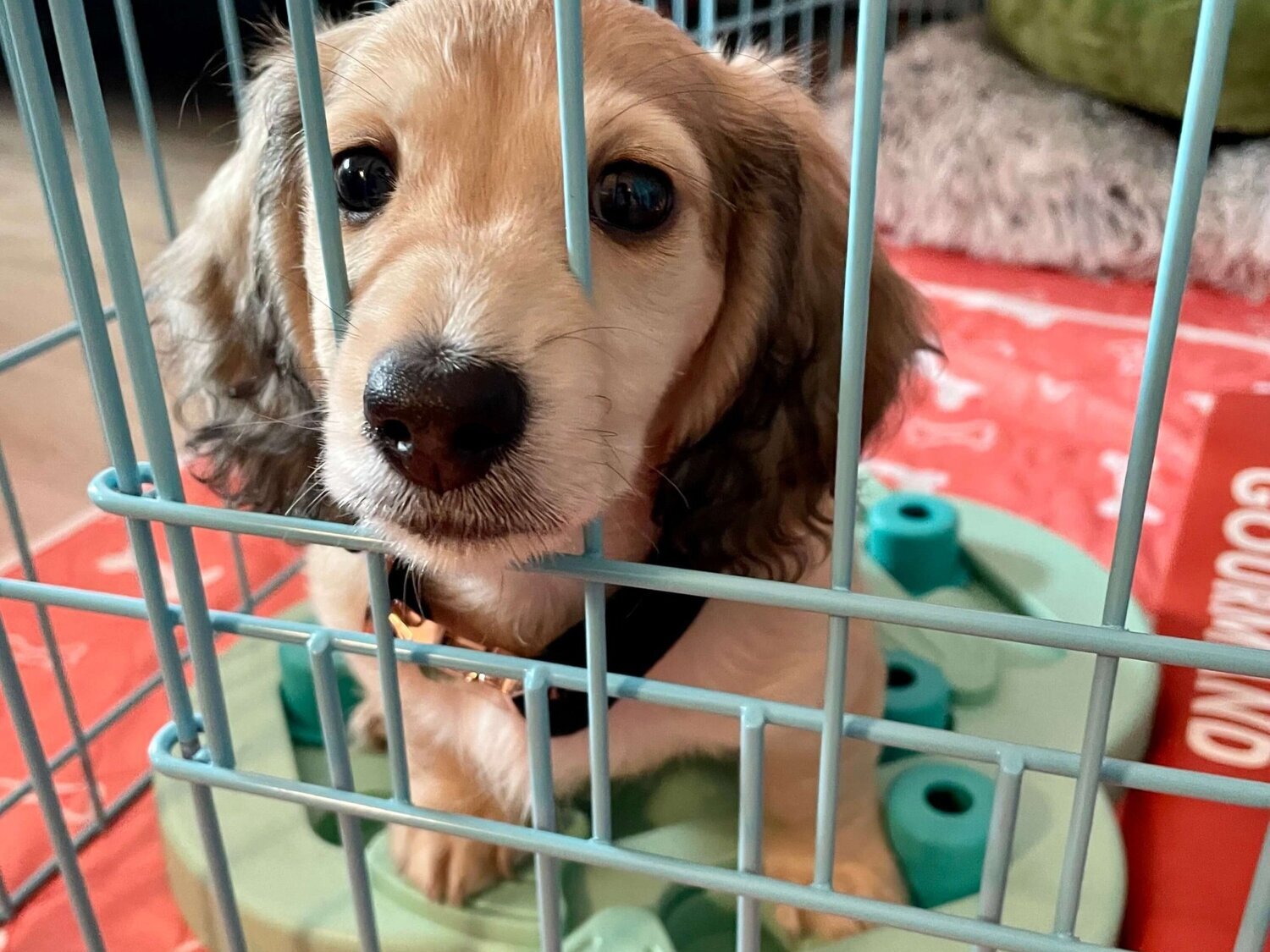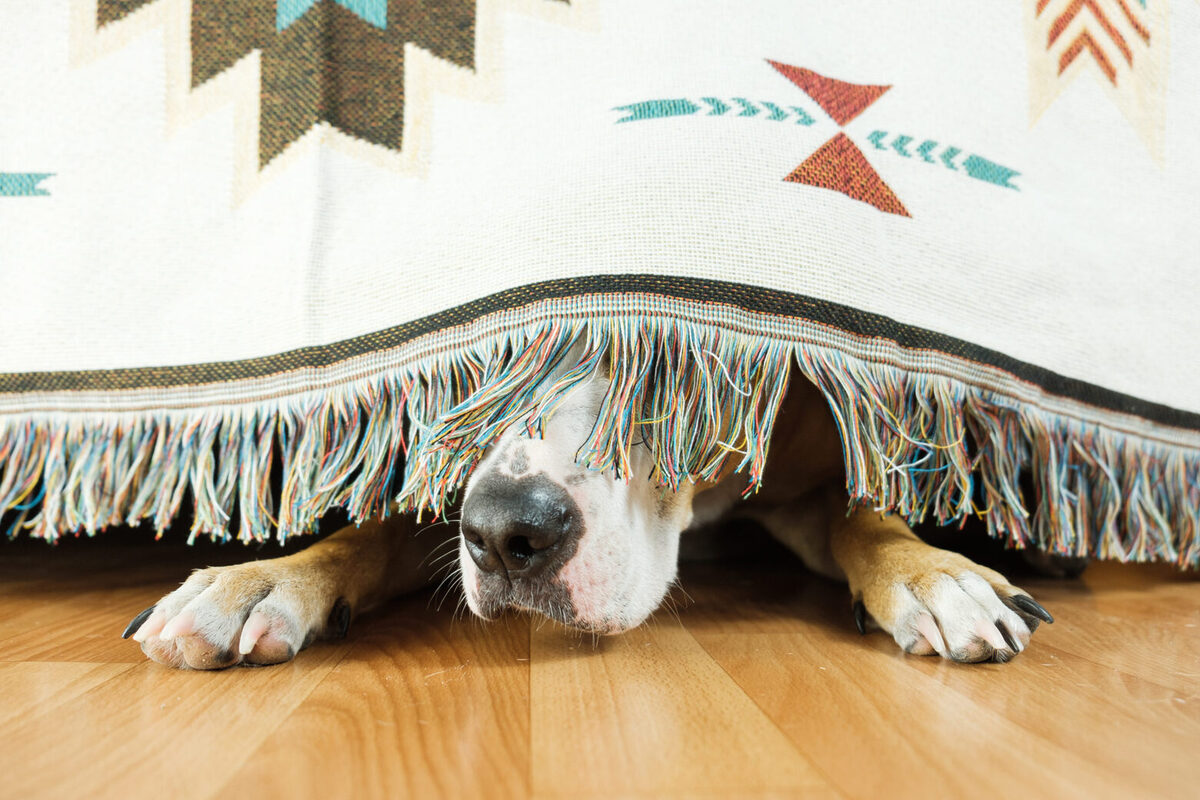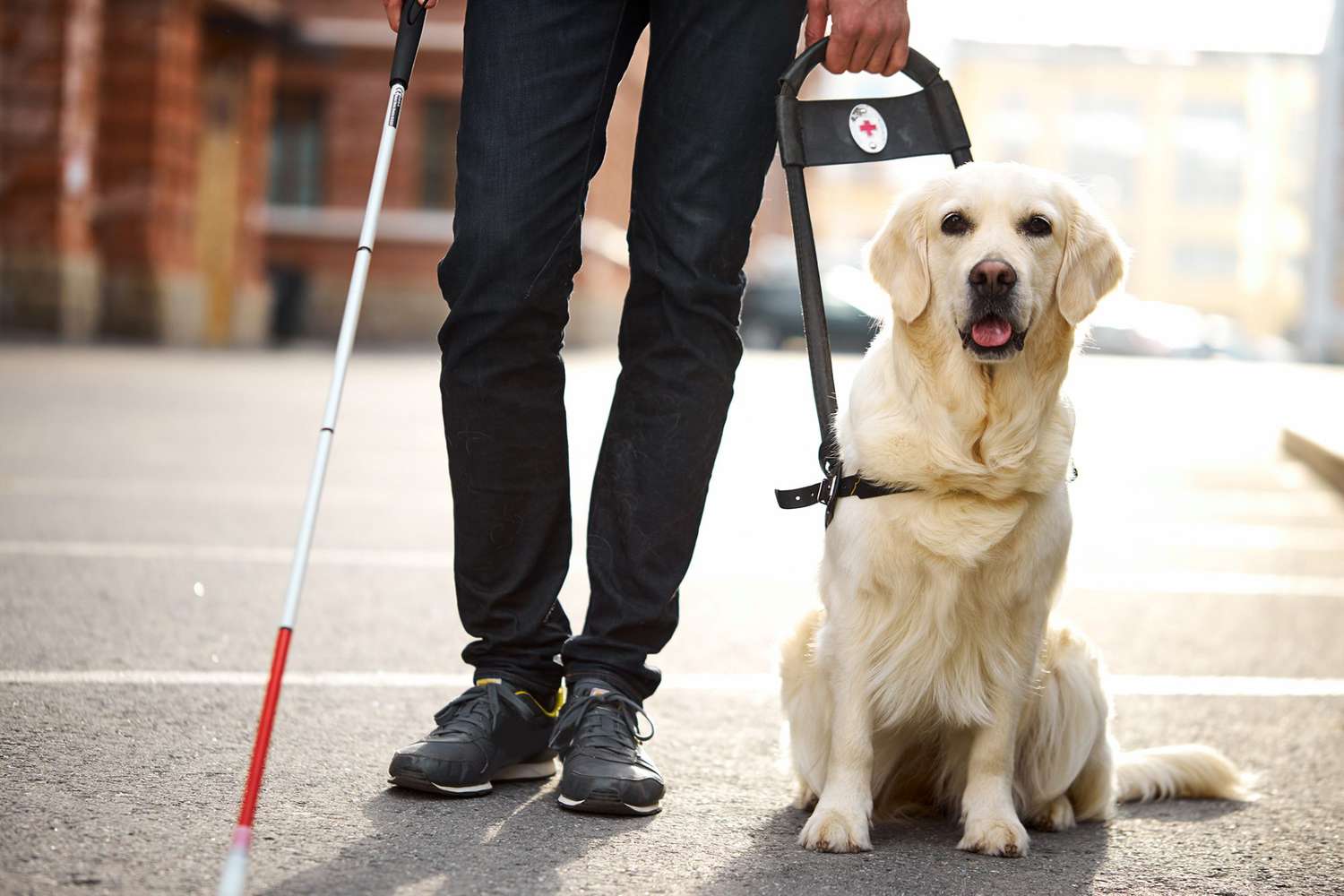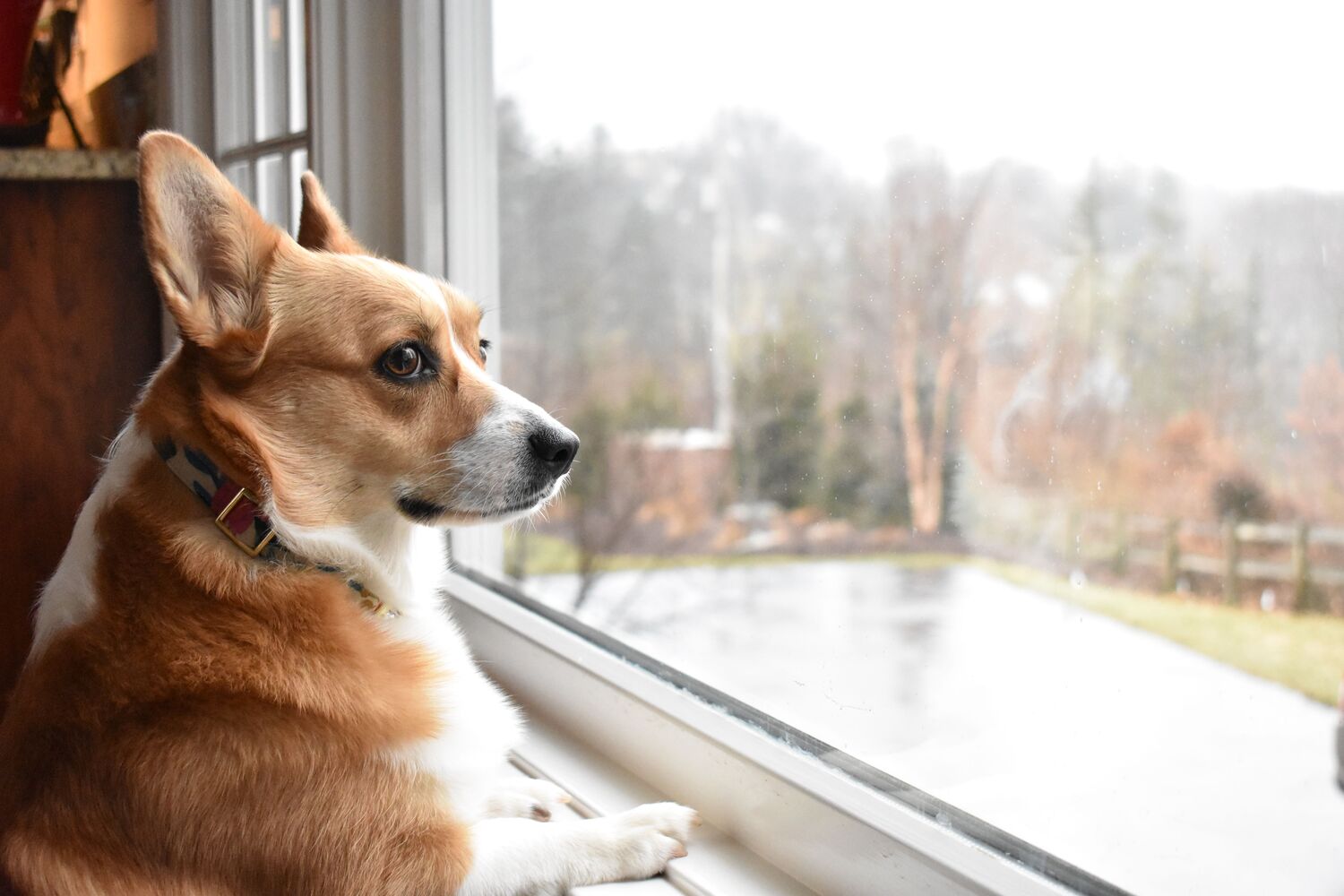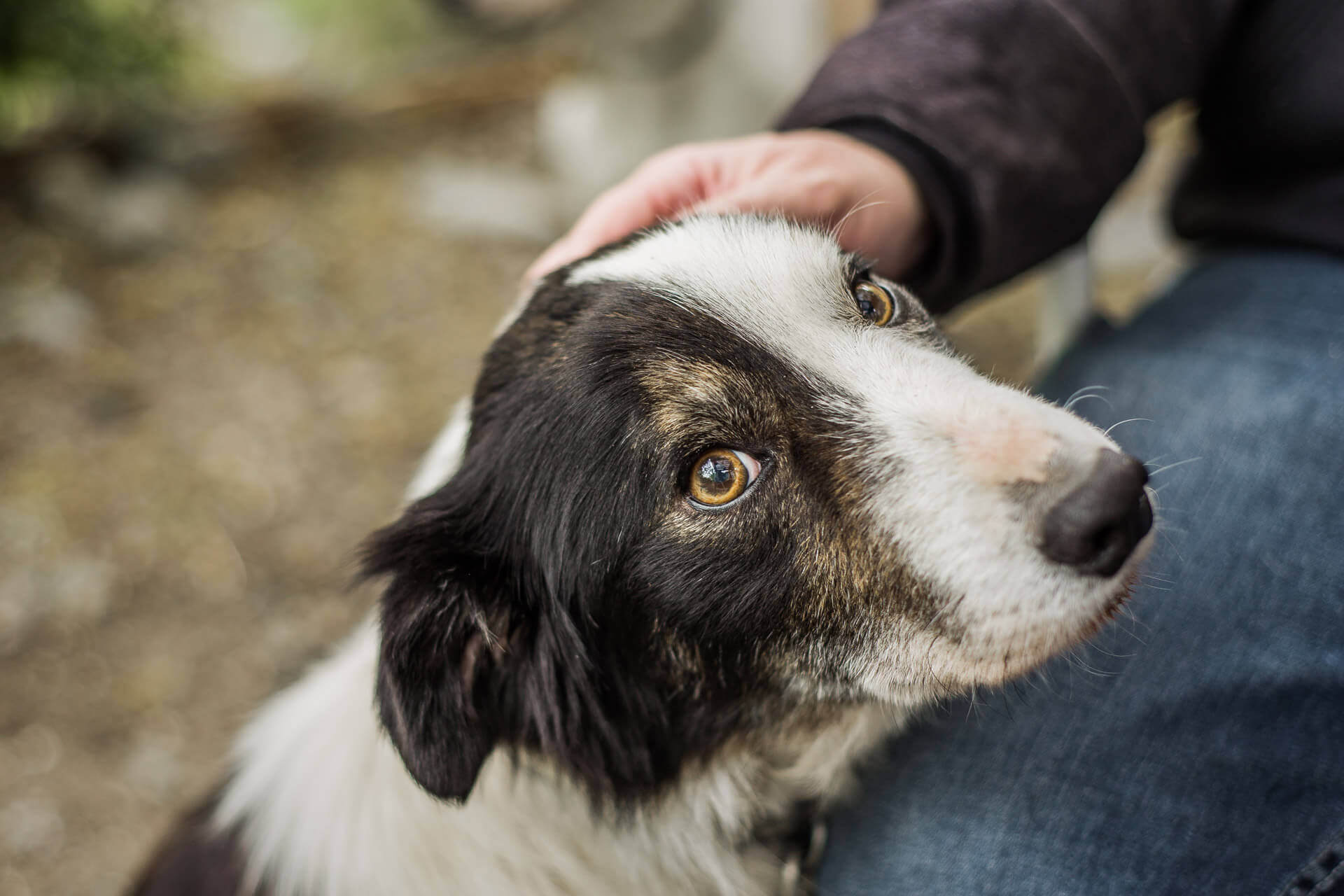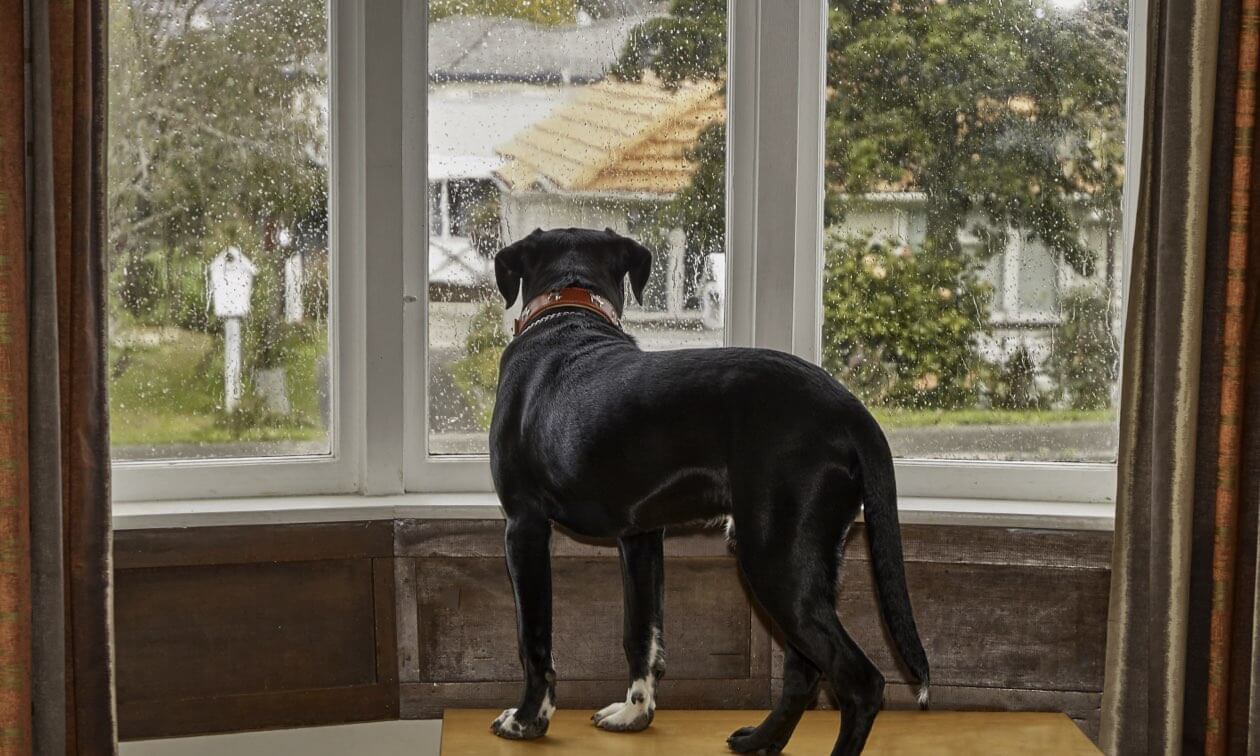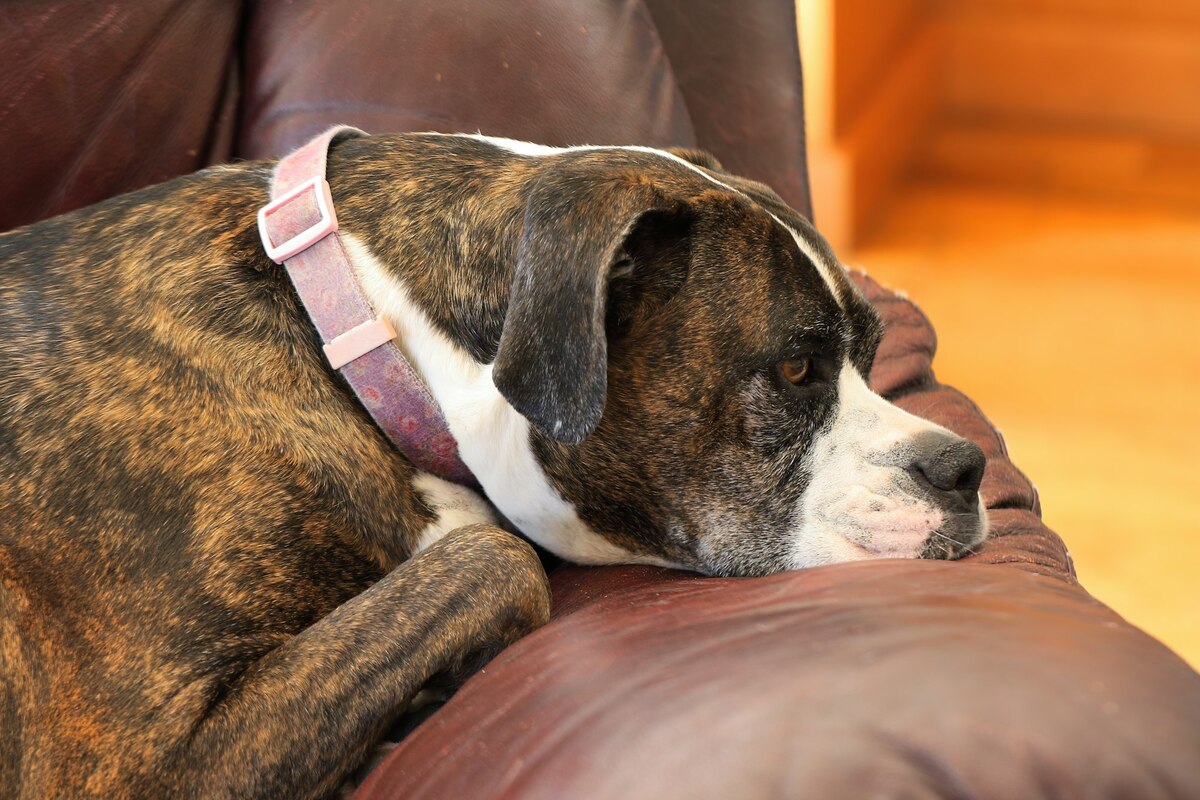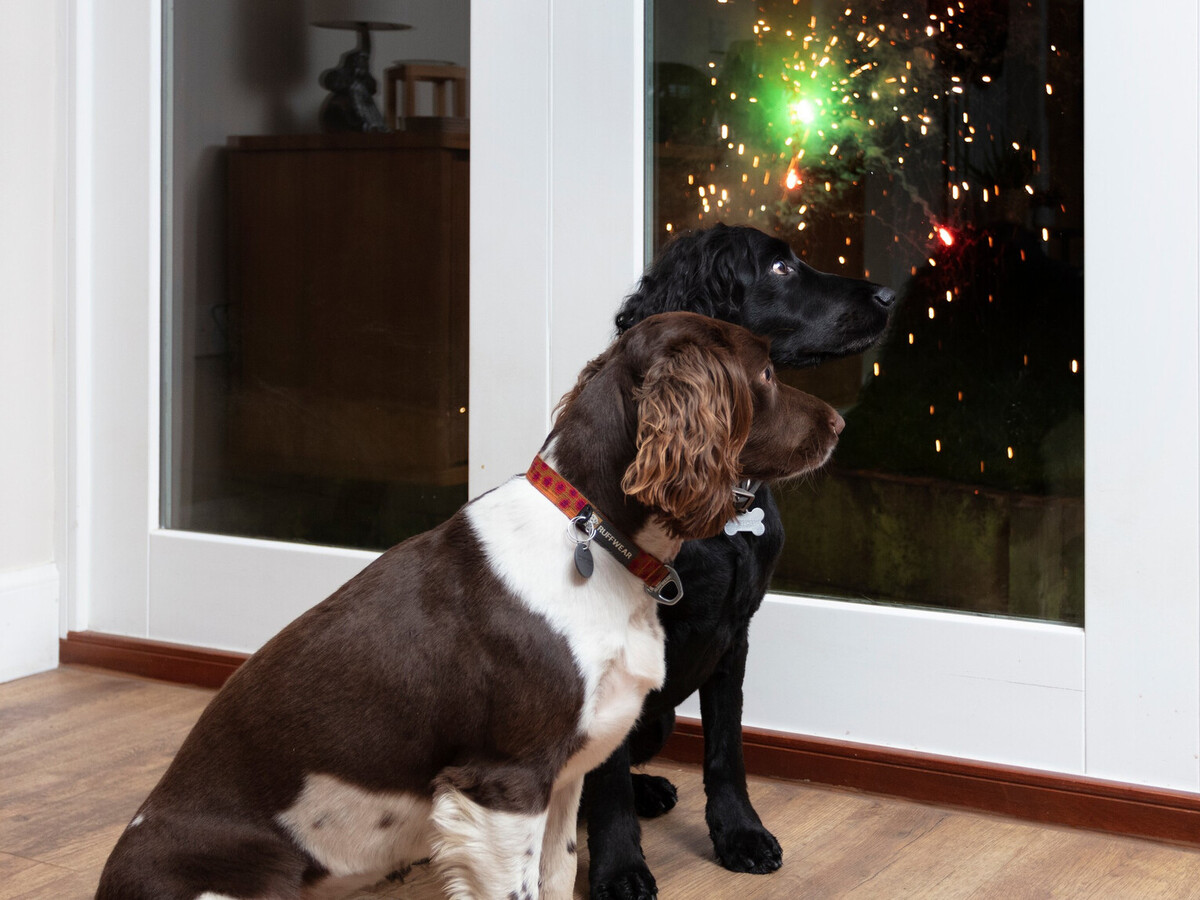Home>Health & Wellness>Behavior & Cognitive Care>How To Help A Rescue Dog With Separation Anxiety
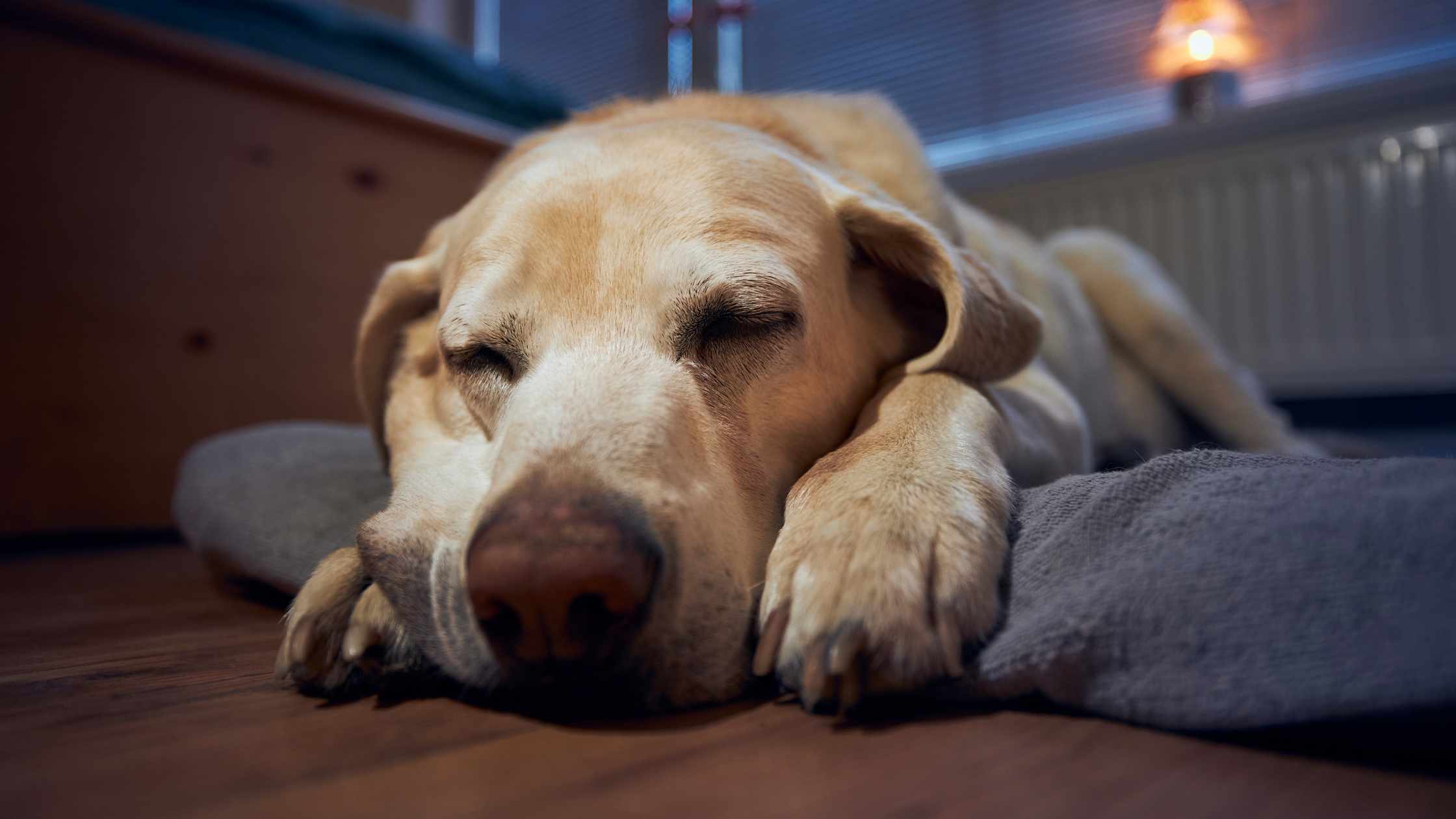

Behavior & Cognitive Care
How To Help A Rescue Dog With Separation Anxiety
Published: January 29, 2024
Learn effective strategies to help a rescue dog cope with separation anxiety. Discover behavior and cognitive care tips to support your furry friend's well-being.
(Many of the links in this article redirect to a specific reviewed product. Your purchase of these products through affiliate links helps to generate commission for Pawsomeoldies.com, at no extra cost. Learn more)
Table of Contents
Understanding Separation Anxiety in Rescue Dogs
Separation anxiety is a common behavioral issue observed in many rescue dogs. This condition stems from the fear and stress experienced when a dog is separated from their owner or guardian. For rescue dogs, who may have experienced trauma or abandonment in the past, this anxiety can be particularly pronounced. Understanding the signs and symptoms of separation anxiety is crucial in providing the necessary support and care for these vulnerable animals.
Rescue dogs with separation anxiety may exhibit various distress behaviors when left alone, such as incessant barking, destructive chewing, pacing, or attempting to escape. These behaviors are not indicative of disobedience or spite; rather, they are manifestations of the dog's overwhelming anxiety and fear of being abandoned once again. It's important for caregivers to recognize these behaviors as symptoms of an underlying issue rather than mere misbehavior.
Moreover, it's essential to understand that separation anxiety can manifest differently in each dog. While some may display extreme distress immediately upon separation, others may exhibit signs of anxiety leading up to the departure, such as following their owners from room to room or displaying clingy behavior. Recognizing these individual variations in behavior is crucial for tailoring an effective treatment plan for each rescue dog.
By acknowledging the emotional turmoil experienced by rescue dogs with separation anxiety, caregivers can approach the issue with empathy and patience. This understanding forms the foundation for implementing strategies to alleviate the distress and help these dogs feel secure and supported in their new environment.
Creating a Safe and Comfortable Environment
Creating a safe and comfortable environment is paramount in helping rescue dogs overcome separation anxiety. The physical space in which a dog spends its time significantly impacts its emotional well-being. For rescue dogs, who may have experienced trauma or instability in the past, a secure environment plays a pivotal role in building trust and a sense of security.
One of the fundamental aspects of creating a safe environment for a rescue dog is to designate a specific area within the home that serves as their sanctuary. This area should be equipped with familiar items such as a cozy bed, favorite toys, and comforting blankets. These familiar objects can provide a sense of security and comfort, helping to alleviate the anxiety experienced when left alone.
In addition to providing familiar items, it's essential to ensure that the environment is free from potential hazards. Removing any objects that could pose a danger to the dog, such as toxic plants or small items that could be ingested, is crucial in creating a safe space. Moreover, securing windows and doors to prevent escape attempts can help minimize the distress experienced by a dog with separation anxiety.
Furthermore, the overall ambiance of the environment should promote a sense of calm and relaxation. Soft, soothing music or white noise can help create a tranquil atmosphere, potentially reducing the dog's anxiety levels. Additionally, ensuring that the space receives adequate natural light and ventilation can contribute to a more comfortable and inviting environment for the dog.
Another vital aspect of creating a safe and comfortable environment is to establish a predictable daily routine. Consistency in feeding times, walks, and play sessions can provide a sense of stability and security for the dog. Predictability in their daily activities can help alleviate anxiety and create a sense of reassurance, ultimately contributing to a more relaxed state of mind when left alone.
By creating a safe and comfortable environment, caregivers can significantly impact a rescue dog's well-being and their ability to cope with separation anxiety. This nurturing environment serves as the foundation for implementing further strategies to help the dog overcome their anxiety and build confidence in their new home.
Establishing a Consistent Routine
Establishing a consistent routine is pivotal in providing stability and predictability for rescue dogs struggling with separation anxiety. Dogs, by nature, thrive on routine and structure, and for rescue dogs who may have experienced upheaval and uncertainty in the past, a consistent daily schedule can be profoundly reassuring.
The routine should encompass essential activities such as feeding times, walks, play sessions, and rest periods. Consistency in these daily activities helps the dog anticipate and understand what to expect, fostering a sense of security and stability. When a dog knows what to expect throughout the day, it can alleviate the anxiety associated with the fear of the unknown.
Feeding times should be consistent and ideally aligned with the dog's natural circadian rhythm. This regularity not only helps in establishing a routine but also contributes to the dog's overall well-being. Similarly, scheduling walks and playtime at the same times each day provides the dog with a sense of predictability, reducing stress and anxiety.
In addition to daily activities, it's crucial to establish a consistent departure and arrival routine. When leaving the house, caregivers should refrain from making departures overly emotional or prolonged. A calm and matter-of-fact departure can help signal to the dog that separations are a normal part of the routine. Similarly, returning home should be low-key, allowing the dog to settle back into the environment without excessive excitement.
Moreover, incorporating mental stimulation activities into the daily routine can be immensely beneficial for dogs with separation anxiety. Engaging the dog in interactive games, puzzle toys, or training exercises not only provides mental enrichment but also helps in redirecting their focus from the stress of being alone.
Consistency in routine should extend to bedtime as well. Establishing a regular bedtime and creating a calming pre-sleep ritual can help the dog unwind and prepare for rest. A comfortable and familiar sleeping area further reinforces the sense of security, promoting better sleep quality for the dog.
By establishing a consistent routine, caregivers can instill a sense of predictability and security for rescue dogs with separation anxiety. This structured approach forms the cornerstone of a supportive environment, laying the groundwork for the dog to build confidence and resilience in managing their anxiety.
Gradual Desensitization to Alone Time
Gradual desensitization is a fundamental technique in helping rescue dogs overcome separation anxiety. This method involves systematically acclimating the dog to being alone for increasing periods, allowing them to build confidence and tolerance towards solitude. By approaching alone time in a gradual and progressive manner, caregivers can help the dog reframe their perception of being alone from a source of distress to a manageable and even positive experience.
The process of gradual desensitization begins by identifying the dog's current threshold for being alone without experiencing heightened anxiety. This initial duration serves as a starting point from which to incrementally extend the time spent apart. For instance, if the dog initially shows signs of distress after being left alone for only a few minutes, the desensitization process would commence with short absences of a minute or less.
Once the dog demonstrates comfort and relaxation during these brief separations, the duration of alone time can be gradually extended in small increments. This incremental approach allows the dog to acclimate to longer periods of solitude at a pace that is conducive to their emotional well-being. It's crucial to progress at a pace that ensures the dog remains calm and composed, as rushing the process can exacerbate their anxiety.
During the desensitization process, it's beneficial to engage in pre-departure rituals that signal the dog's impending alone time in a positive light. These rituals can include providing a special treat or engaging in a calming activity that the dog enjoys. By associating these rituals with the upcoming alone time, the dog can develop a positive association with the impending separation, helping to alleviate their anxiety.
Moreover, incorporating interactive toys or puzzle feeders during alone time can help redirect the dog's focus and provide mental stimulation, mitigating feelings of distress. These enriching activities not only serve as a positive distraction but also contribute to the dog's overall well-being, fostering a sense of contentment during periods of solitude.
Throughout the desensitization process, it's essential for caregivers to observe the dog's behavior closely and adjust the pace of progression based on their individual response. Patience and attentiveness are paramount, as every dog will respond differently to the desensitization process. By respecting the dog's emotional threshold and progress, caregivers can effectively support them in gradually building confidence and resilience in managing alone time.
In essence, gradual desensitization to alone time is a compassionate and effective approach in helping rescue dogs with separation anxiety. By methodically acclimating the dog to being alone and reshaping their perception of solitude, caregivers can empower these vulnerable animals to feel more secure and at ease in their environment.
Providing Mental and Physical Stimulation
Ensuring adequate mental and physical stimulation is essential in supporting rescue dogs with separation anxiety. Engaging these dogs in enriching activities not only serves as a positive distraction from their distress during alone time but also contributes to their overall well-being and emotional resilience.
Physical exercise plays a crucial role in helping dogs release pent-up energy and anxiety. Regular walks, interactive play sessions, and engaging in activities such as fetch or agility exercises provide an outlet for the dog's physical energy, promoting relaxation and reducing stress levels. For rescue dogs with separation anxiety, physical exercise can be particularly beneficial in channeling their anxious energy into productive and positive outlets.
In addition to physical activity, mental stimulation is equally vital for the well-being of dogs with separation anxiety. Engaging the dog in interactive games, puzzle toys, and obedience training exercises not only provides mental enrichment but also helps redirect their focus from the stress of being alone. Mental stimulation activities can help alleviate boredom and anxiety, fostering a sense of contentment and fulfillment for the dog.
Furthermore, incorporating food puzzle toys or interactive feeders can be an effective way to provide mental stimulation during alone time. These engaging activities not only keep the dog's mind occupied but also offer a rewarding and positive association with being alone. By making alone time an opportunity for mental engagement and enjoyment, caregivers can help reshape the dog's perception of solitude, ultimately reducing their anxiety levels.
Moreover, considering the dog's individual preferences and interests is crucial in providing effective mental and physical stimulation. Some dogs may particularly enjoy scent games or hide-and-seek activities, while others may thrive on interactive toys that dispense treats. Understanding and catering to the dog's unique preferences can enhance the effectiveness of mental and physical stimulation, promoting a sense of fulfillment and well-being.
By prioritizing mental and physical stimulation, caregivers can significantly contribute to the emotional resilience and well-being of rescue dogs with separation anxiety. These enriching activities not only serve as positive distractions during alone time but also play a pivotal role in fostering a sense of contentment, fulfillment, and overall emotional balance for these vulnerable animals.
Seeking Professional Help if Needed
In some cases, despite dedicated efforts and compassionate care, rescue dogs with separation anxiety may require professional intervention to address their emotional distress effectively. Seeking the expertise of a qualified animal behaviorist or veterinarian can provide invaluable support in developing a comprehensive treatment plan tailored to the specific needs of the dog.
Professional behaviorists possess the knowledge and experience to conduct a thorough assessment of the dog's anxiety triggers and behavioral patterns. Through careful observation and analysis, they can identify underlying factors contributing to the separation anxiety and formulate targeted strategies to address these issues. This may involve implementing behavior modification techniques, desensitization protocols, and specialized training to help the dog build confidence and resilience in managing alone time.
Furthermore, a veterinarian's input is essential in ruling out any potential medical causes or contributing factors to the dog's anxiety. Physical health issues, such as pain or discomfort, can exacerbate anxiety symptoms, and a comprehensive medical evaluation can ensure that the dog's emotional well-being is not compromised by undetected health concerns. Additionally, veterinarians can provide guidance on pharmacological interventions or holistic remedies that may complement behavioral therapy in alleviating the dog's anxiety.
Collaborating with professionals also offers caregivers the opportunity to receive personalized guidance and support in implementing effective strategies. Behaviorists and veterinarians can educate caregivers on recognizing subtle signs of distress, refining their approach to alone time, and fostering a supportive environment that promotes the dog's emotional well-being. This collaborative approach empowers caregivers with the knowledge and tools to provide the best possible care for the dog.
Moreover, professional intervention can offer reassurance and encouragement to caregivers who may feel overwhelmed or uncertain about managing the complexities of separation anxiety. The guidance and expertise of professionals can instill confidence in caregivers, enabling them to navigate the challenges of supporting a dog with separation anxiety with greater understanding and efficacy.
Ultimately, seeking professional help when needed demonstrates a commitment to prioritizing the well-being of the rescue dog. By leveraging the expertise of behaviorists and veterinarians, caregivers can access specialized knowledge, tailored interventions, and ongoing support, fostering a holistic and compassionate approach to addressing the dog's separation anxiety.
In summary, professional intervention can be instrumental in providing comprehensive care for rescue dogs with separation anxiety, offering a pathway to understanding, healing, and emotional well-being for these vulnerable animals.
